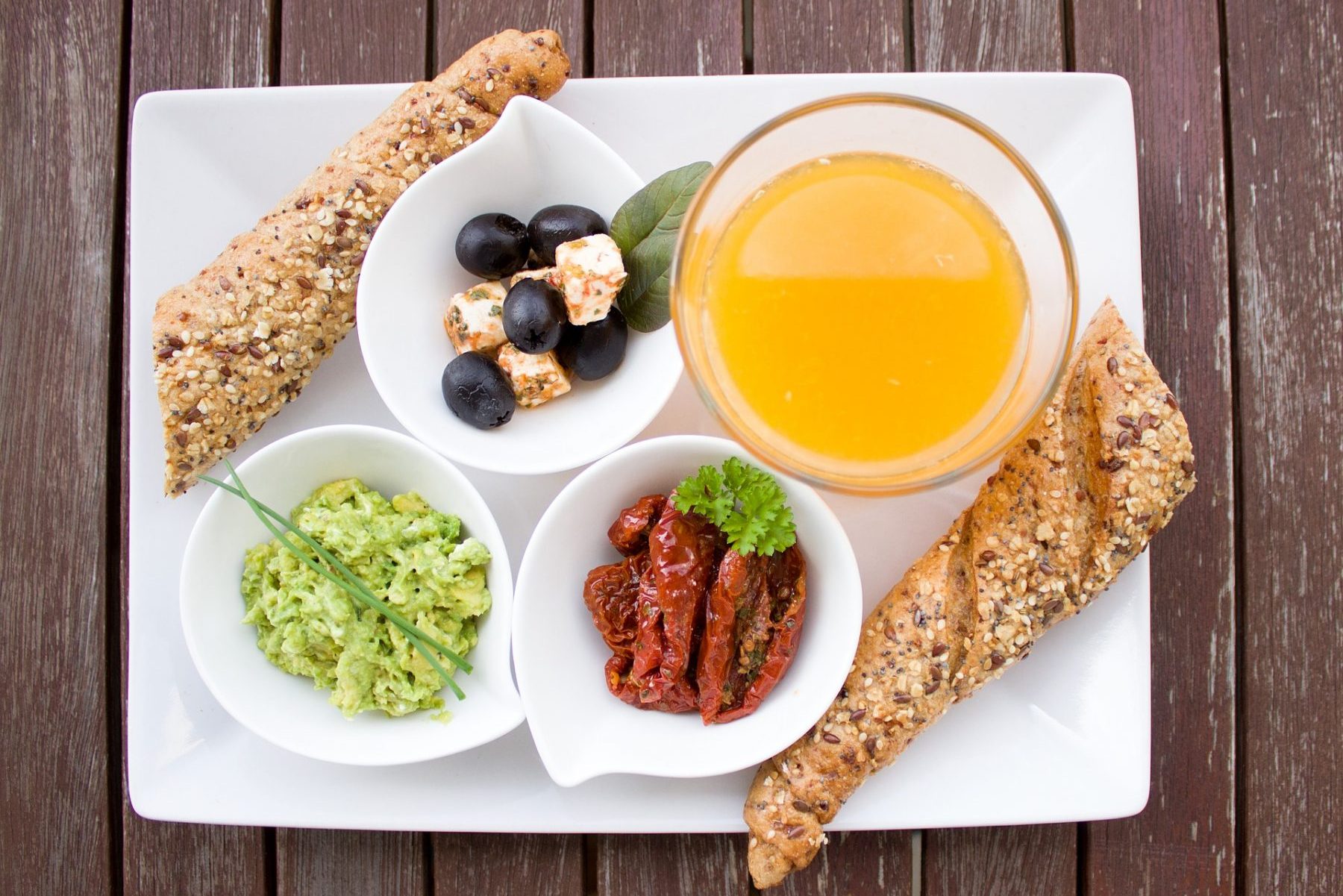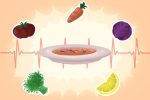Even people who have no interest in losing weight have heard of the keto diet. And almost all of them know that eating keto means giving up bread, pasta, rice, potatoes, sweets, soda — all the carbohydrates that Americans know and love.
It’s easy to say that the ketogenic diet (the full name for the keto diet) is “high-fat, low-carb,” but it’s a lot harder to define what “low-carb” really means.
The diet isn’t “no-carb,” it’s low-carb. So does that mean you can sneak in a Hershey bar or some French fries every once in a while? For that matter, if you have to give up just about every type of carbohydrate-loaded food you’ve ever heard of, why would you be eating any carbs at all?
The simple answers to those questions:
1. No, you can’t.
2. Because even foods like strawberries and lettuce contain small amounts of carbs.
And the simple answer to the question you’re really asking:
On a keto diet, most people should eat no more than 20 net carbs per day.
We know you asked about carbs, not net carbs. But the complete answers — the ones you can really use — require more detailed explanations.
What Are Carbs?
In dietary terms, carbohydrates are the starches, sugars and fiber that are found in foods. Carbs are one of the three groups of “macronutrients” that everyone’s familiar with; the other two are fat and protein. Most carbohydrates are converted in the body to glucose, a form of sugar, to be used for energy or stored as fat.
The exception is fiber, which can’t be digested or broken down into sugar by the body. And there are two types of fiber. Soluble fiber, which dissolves in water, is used by the body to regulate the glucose that enters the bloodstream when carbs are broken down. Insoluble fiber helps with digestion and prevents constipation.
Why was it important to go into detail about fiber? It was so we can explain the difference between “carbs” and “net carbs” — because the keto diet actually restricts net carbs, not total carbs.
Since fiber isn’t turned into glucose, it has virtually no impact on the amount of blood sugar or insulin in the body. Those levels determine if your body goes into ketosis, the metabolic state when rapid weight loss is possible on a keto diet. So even though fiber is a carbohydrate, it doesn’t factor into carb limits when you’re on keto. And that means we have to do a little math.
When you look at a keto food list or the labels on packaged food, you’ll often see two numbers listed under the heading of “carbs”: total carbs and net carbs. Total carbs includes fiber, net carbs does not — and net carbs is the number you’re after. Some labels will just list total carbs and “carbs from fiber.” In that case, subtract the second number from the first to calculate the net carbs for that food.
Again, net carbs is the key number to look at when you’re on a ketogenic diet.
Should You Care About Good Carbs and Bad Carbs?
There’s another distinction you’ll often read about when researching the keto diet (and other low-carb diets): good carbs and bad carbs. In general terms, “good” carbs are the ones with lots of fiber, meaning they’ll be low in net carbs. “Bad” carbs are most commonly found in refined grains, which have been stripped of fiber and nutrients (to visualize refined carbs, think white bread and white rice, not whole-grain bread or rice), and in processed foods, which may include sugar, corn syrup or refined flours.
Closely tracking good and bad carbs isn’t critical when you’re on a keto diet, since the most important number is net carbs. The distinction definitely matters, though, for two reasons.
First, bad carbs are almost always going to contain more net carbs, so they can eat up all of your daily carb allowance in a flash. And second, bad carbs are called bad carbs for a reason: They’re bad for you.
Even if your weight loss program is based on the keto diet (or another low-carb eating plan), it’s still important to eat healthy foods. Avoiding bad carbs is a smart way to make sure you’re eating as healthily as possible, particularly when you’re placing strict limits on one of the major macronutrient groups.
Enough, Already — How Many Carbs Can I Eat On a Keto Diet?
Now that you’ve learned more than you ever wanted to know about carbohydrates, we can finally discuss how many carbs you can eat on keto. Unfortunately, there’s not a simple answer. Here’s why.
— As you now know, the keto diet restricts the amount of net carbs you can eat, and not the amount of total carbs. So the right question to ask is really “How many net — not total — carbs are okay on a keto diet?”
— The keto diet isn’t based on numbers; it’s based on percentages. So the guidelines generally call for a diet composed of 75% fat, 20% protein and 5% carbs, not specific numbers of carbs or specific weights of proteins.
— Everyone is different. Not only do most men require more calories than women, but construction workers or pro athletes are going to require more calories (and more food) than sedentary stay-at-home parents or office workers.
So now we’ve refined our question even further: “How many net carbs are okay for me personally on a keto diet?”
There are online calculators to help you come up with a pretty accurate number; they ask everything from your sex, height, weight and age, to your body fat percentage and your daily activity level. You can also factor in things like the goals of your keto diet (such as losing weight, maintaining weight or gaining muscle) and how much protein you want to eat each day. That will give you the “exact” number of net carbs to focus on.
However, there is a rule-of-thumb that’s generally used for people who are average size, somewhat overweight and moderately active: You should restrict your net carb intake to no more than 20 grams per day when starting a keto diet. That level should help you achieve ketosis and stay there.
After a few months, it’s a good idea to push the limits a bit. For example, you can increase net carbs to 25 for a few days, while monitoring your ketones and glucose (easy to do with a DIY meter) to see if you’re close to falling out of ketosis. If so, go back down to 20 grams; if not, you may be able to push your limits even more.
Since we’re answering questions, there’s probably one more that comes to mind: “What does 20 net carbs per day mean for my food choices?”
Most packaged foods have net carbs on the label, and there are huge lists you can consult to determine how many net carbs are in fresh foods. Here’s a list of the best keto diet foods to eat to keep net carbs low; the numbers are based on a serving size of 3.5 ounces (or 100 grams) for most foods and one cup for most liquids:
- Meat, fish and protein: 0 net carbs
- Butter and olive oil: 0 net carbs
- Eggs: 0 net carbs
- Stevia and similar sweeteners: 0 net carbs
- Most types of hard cheese: 0 – 1.5 net carbs
- Lettuce: <1 net carb for most types
- Coconut or almond milk: 1 – 1.5 net carbs
- Pecans: 1 net carb
- Cucumbers: 1.6 net carbs
- Avocado: 1.8 net carbs
- Zucchini: 2.4 net carbs
- Blackberries and raspberries: 3 net carbs
- Green beans: 4.3 net carbs
- Tomatoes: 4.8 net carbs
- Peanut butter: 5 net carbs
On the other hand, some of the foods you’ll want to avoid include a slice of bread (average 10-15 net carbs), a banana (24 net carbs), a sports bar (average 25-30 net carbs), a potato (33 net carbs) and flavored yogurt (45 net carbs).
It’s not easy to limit yourself to 20 net carbs per day. On the other hand, no one ever said weight loss was easy.
















